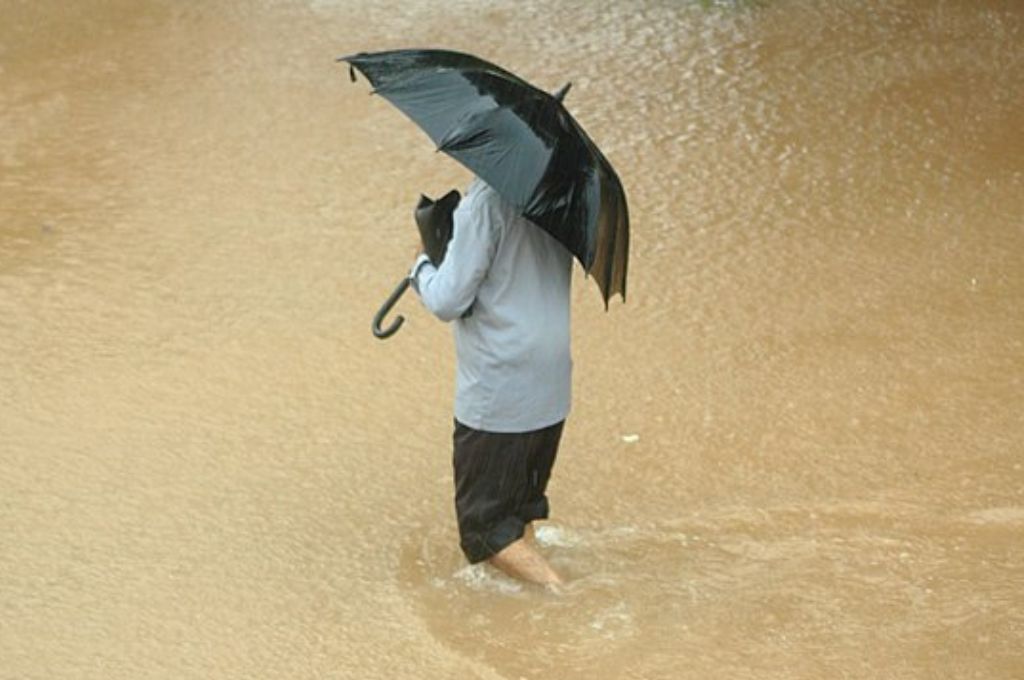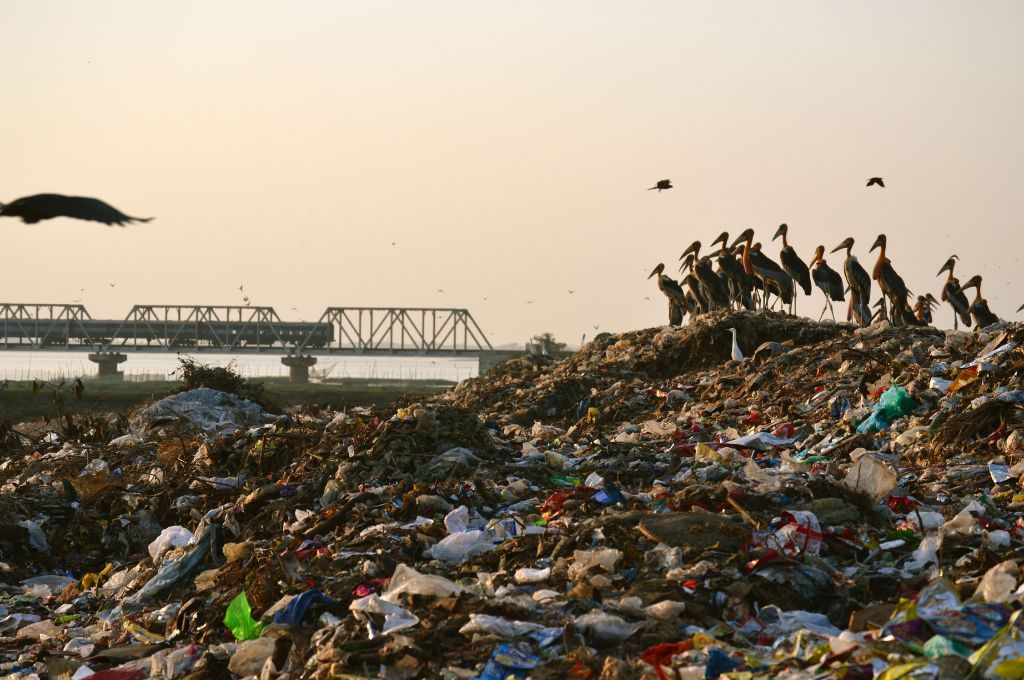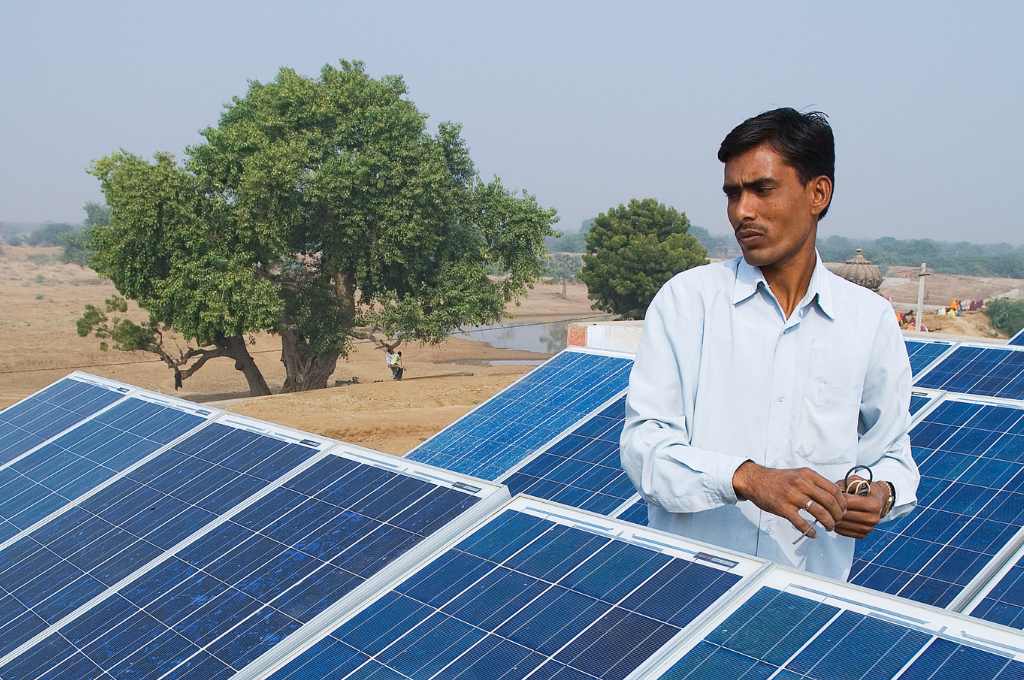Northern India has been facing the severe impact of unusually heavy rainfall causing floods, landslides, distress, and displacement. As has been pointed out, while factors linked to climate change are partly the reason, the poor resilience and adaptation of our habitations is playing a crucial role by increasing our vulnerability to the crisis. This is a result of the kind of development that has taken place over time, including construction in flood plains and deforestation in uphill regions.
It becomes necessary therefore to talk about climate adaptation, which is the process of adjusting to the expected impacts of climate change such as increase in erratic rainfall patterns, droughts, and change in mean temperatures. It involves deliberate actions taken to reduce the negative consequences of the emergency. Historically, climate adaptation has received far less attention than climate mitigation (that is, actions taken to reduce the sources or increase the sink of greenhouse gases). Consequently, funding directed to climate adaptation has been far less as well.
In India, according to one estimate, the ratio of funding for climate adaptation to mitigation stands at 1:8, at INR 37,000 crore per year and INR 3,09,000 crore per year respectively for 2019–20. While mitigation itself remains underfunded, at only 25 percent of the estimated requirement of 11 lakh crore per annum, the funding gap for adaptation is much higher, with only 8 percent of the estimated requirement of INR 4.4 lakh crore per annum being met. This is concerning, given India’s high vulnerability to climate change.
In this year’s Union Budget as well, climate change adaptation was only addressed indirectly. No dedicated funding was allocated for it. Certain announcements, such as the mangrove plantation initiative and the initiative to make India a global hub for millets, are likely to help reap adaptation benefits, but this would depend on how these initiatives are rolled out and who has agency in the process. Crucial aspects, such as accounting for physical climate risks and enhancing the resilience of communities and habitations, have not found mention. This contrasts with mitigation, which has received clear mention in announcements on green mobility, energy efficiency, the green hydrogen mission, and more.
Why does climate adaptation get sidelined?
Difficulty in finding scalable business models
Many adaptation solutions often cannot promise direct return on investment (ROI), which becomes a barrier for investors. Unlike in mitigation, where solutions are usually technology-driven and lend themselves to scalable business models such as EVs or solar panels, adaptation solutions tend to be highly local, socio-ecological solutions, tailored to the geographic, climatic, and social context of a region. These could include increasing water percolation, wetland rejuvenation, and optimising crop choice—all of which can be challenging to scale as quickly as mitigation solutions. Payback is indirect, hard to measure in monetary terms, and accrues over a longer term. This results in little mainstream capital flowing into adaptation.
Lack of incentive for innovation
The need for adaptation is currently most acutely felt by those exposed to the climate’s vagaries—small and marginal farmers, rural women, poor urban communities, and those who don’t have the buffer of infrastructure to shield them from climate stress. These communities often do not have high purchasing power and may not be a priority for the private sector to innovate for.
Hard to measure
Even in climate-benefit terms, adaptation has proved difficult to measure, quantify, and standardise. How does one measure resilience? It is a highly local and contextual affair, and while there are some guidelines on how this may be done, it is likely to remain challenging, especially in a country as diverse as India.
On the other hand, carbon is easier to measure and is the same everywhere. This means a consequent ease in monitoring solutions to increase sinks or reduce emissions, leading to much easier flow of capital to mitigation. Given such uncertainties, complexities, and risks, the private sector has shied away from financing climate adaptation solutions.
Skewed global discourse
International funding too has remained scarce for adaptation due to the skewed global discourse on climate change, and because mitigation action is seen to have more direct global consequences than adaptation action. Mitigation solutions in India received 51 percent of funding from private sources and 13 percent from international sources in 2019–20.
The domestic philanthropic space, however, has been seeing a different trend, with more donors funding adaptation than mitigation, and an increase in the overall quantum of funding towards climate-adjacent sectors such as water and livelihoods. However, the scope of such capital is likely to remain small and catalytic, in support of other capital such as global, private, and public.
The public sector, therefore, assumes a critical role in climate adaptation funding, and only it can help build adaptive capacity at the required scale nationally. Indeed, nearly 100 percent of the funding to adaptation in India currently comes from public sources, such as through union and state government budgets. However, this is still only a small fraction of the funding the country actually needs.

How can the public sector step up?
Thus, while the private sector and international funding will continue to help India meet its mitigation deficit, adaptation could fall behind without the public sector stepping up. The public sector needs to view adaptation as a necessary investment to climate-proof the lives, livelihoods, environment, and economy so that the country’s development needs can be met despite climate challenges.
Given this strategic imperative, the government should adopt a ‘mission adaptation’ framework to catalyse adaptation action. This approach is inspired by the ideas developed in Mariana Mazzucato’s ‘Mission Economy’, which describes how the state can incentivise and direct innovation towards solving complex challenges faced by society.
In her book, Mariana explains that mission thinking needs to use ‘the idea of public purpose to guide policy and business activity’. She points out that, historically, the public sector has on many occasions stepped up to fund sectors or goals that were perceived as too risky by the private sector but that could be of strategic importance or had the potential to lead to innovation. These ideas would need to be aligned with the unique challenges of climate adaptation in a country as vast as India.
Mission adaptation: A framework to catalyse climate adaptation
Mission adaptation should help create a supportive ecosystem to encourage innovation geared towards adaptation. It can enable all actors, including the private sector, civil society, the research establishment, and common citizens to co-create locally relevant adaptation solutions. It should also aim to ignite public imagination to achieve this goal.
Funding should be directed towards multiple streams and programmes for this mission to be a success. Some themes it could aim to support are:
1. Focusing on participatory appraisal and co-evolution of solutions
Listening to people on the ground—across landscapes, gender, caste, class, and livelihoods—on how they are experiencing the impact of the climate crisis, how they are responding, what is working and what is not, and how they anticipate future impacts to unfold is crucial to building sustainable climate solutions.
With the support of civil society, the public sector could support participatory exercises with citizens on climate resilience. Jodhpur’s development of a heat action plan through a civil society organisation and government collaboration, and the Spanish citizen climate assemblies, give us some inspiration.
During our work, we have found that participatory exercises employing systems thinking are useful in uncovering climate linkages and responses. For instance, as part of our work with CInI, during an interaction with a federation of smallholder farmers in Dahod, Gujarat, our discussions revealed various climate-linked stressors such as crop loss due to pest incidences and water shortage. The farmers shared lesser-known solutions that were working well, such as solar-based insect traps, which lure in pests using a solar-powered light, and floriculture alongside vegetable farming, which ‘distracts’ pests and saves the vegetables. These contrasted with some other solutions such as pesticides, which they felt harm the good organisms in the soil, create mutated pests in the long run, and increase the farmer’s vulnerability.
While there may be a big market to tap into for meeting people’s adaptation needs, it has to be discovered along with the people.
Participatory systems thinking is also helpful because it can challenge the inputs that emerge from the community. When interconnections between different parts of the system are mapped and taken back to the people, everyone is pushed to think harder and expand their spatial, temporal, and contextual boundaries. When our discussion came to water shortage, for instance, farmers suggested check dams as a solution to increase water availability. However, when we jointly analysed the interconnections between adopting check dams and water availability, it emerged that with the additional water, farmers were more likely to increase cultivated land and shift to cash crops, which in turn would further increase the water footprint and, once again, result in water scarcity. The farmers agreed and added that along with check dams, drip irrigation with mulch would be necessary to ensure a sustainable solution.
While there may be a big market to tap into for meeting people’s adaptation needs, it has to be discovered along with the people. Support from the public sector can facilitate processes and practices that unearth existing and possible adaptation solutions, which are in demand with the communities. Such exercises can, over time, help develop a localised sense of climate adaptation on the ground.
2. Strengthening public systems, schemes, and regulations
Maharashtra recently witnessed incidences of death due to dehydration and heatstroke on account of heat stress. Events such as floods come with their own risk of spikes in vector-borne and water-borne diseases. Therefore, it is crucial to strengthen public systems, such as the public health system, from a climate adaptation lens. Building competent systems to cope with anticipated climate stress is essential in providing an effective safety net for people to adapt to climate impacts.
Schemes such as NREGA can provide the financial means to help people build locally suited adaptation assets.
Infrastructure development on natural drainage flows, building on low-lying areas, and deforestation in mountain areas can also result in increased vulnerability, exacerbating climate change–induced impacts as is being seen in Himachal Pradesh and Delhi. Therefore, regulations around infrastructure development need to be stricter so that local adaptive capacity is not undermined. New infrastructure must be built with an emphasis on bolstering adaptive capacity rather than hindering it. Indeed, public spending will need to be directed towards building adaptation assets—both built-up, such as resilient housing, and natural, such as through wetland rejuvenation. Regulations governing financial markets to encourage finance flows to adaptation must also be strengthened.
Enhancing public schemes, such as NREGA, from a climate adaptation lens can also prove very useful. It has been shown that such schemes have strong climate adaptation co-benefits. These schemes can provide the financial means to help people build locally suited adaptation assets such as percolation tanks to grow their groundwater buffer.
It is important to note that, to be both locally contextual and scalable, these actions must be rolled out on all levels of the public sector. This requires the involvement of the national, state, urban, and rural governance structures.
3. Expanding the understanding and measurement of climate adaptation solutions
Climate change is often positioned as a global topic, with only international conferences spoken of. However, adaptation is highly local, and capacity building around it must be done in a locally relevant way, without the use of jargon. Building the capacity of government bodies, communities, and civil society on climate adaptation and resilience in their local contexts is key to effectively engaging on and preparing adaptation solutions.
The metrics to measure adaptation must also be reimagined to capture climate linkages across the economy and the environment. Reduced distress and loss of livelihoods, reduced costs of rebuilding, and enhanced productivity during climate stress, for example, must be accounted for. But resilience building is also likely to have multiple positive adjacencies on issues as diverse as improving livelihoods and incomes, groundwater conservation, and biodiversity enhancement to resilience to other kinds of stressors such as market shocks and even climate mitigation.
Restructuring the tools and methods we currently use to monitor and evaluate climate adaptation can make them better suited for this contextual complexity, and help drive more of the public imagination towards it.
Climate adaptation being considered a strategic priority by the public sector, and action being directed towards it in mission mode, is in the interests of the country and its people. Both the private and the public sector have important roles to play, but the public sector needs to step up and create the ecosystem for adaptation. It alone can gather and organise investment at the necessary magnitude. Moreover, it is uniquely positioned to provide the type of enduring, patient, and goal-driven support that is needed at this stage. Climate change–related impacts are anticipated to become more frequent and severe, and in the absence of resilience-building of communities and habitations, they could be devastating.
This article has been rewritten in parts by the author specifically for a nonprofit audience. The original version was published on The Indian Express.
—
Know more
- Listen to this podcast to learn about how corporate, individual, and private philanthropy can step up for climate action.
- Read this study on adopting an Indian approach to adaptation in the global south.
- Read this article to learn more about how a host of factors played a role in worsening the impact of the Delhi floods.






